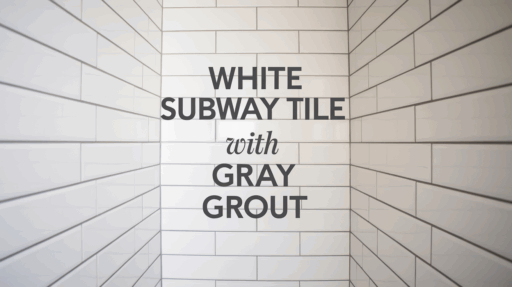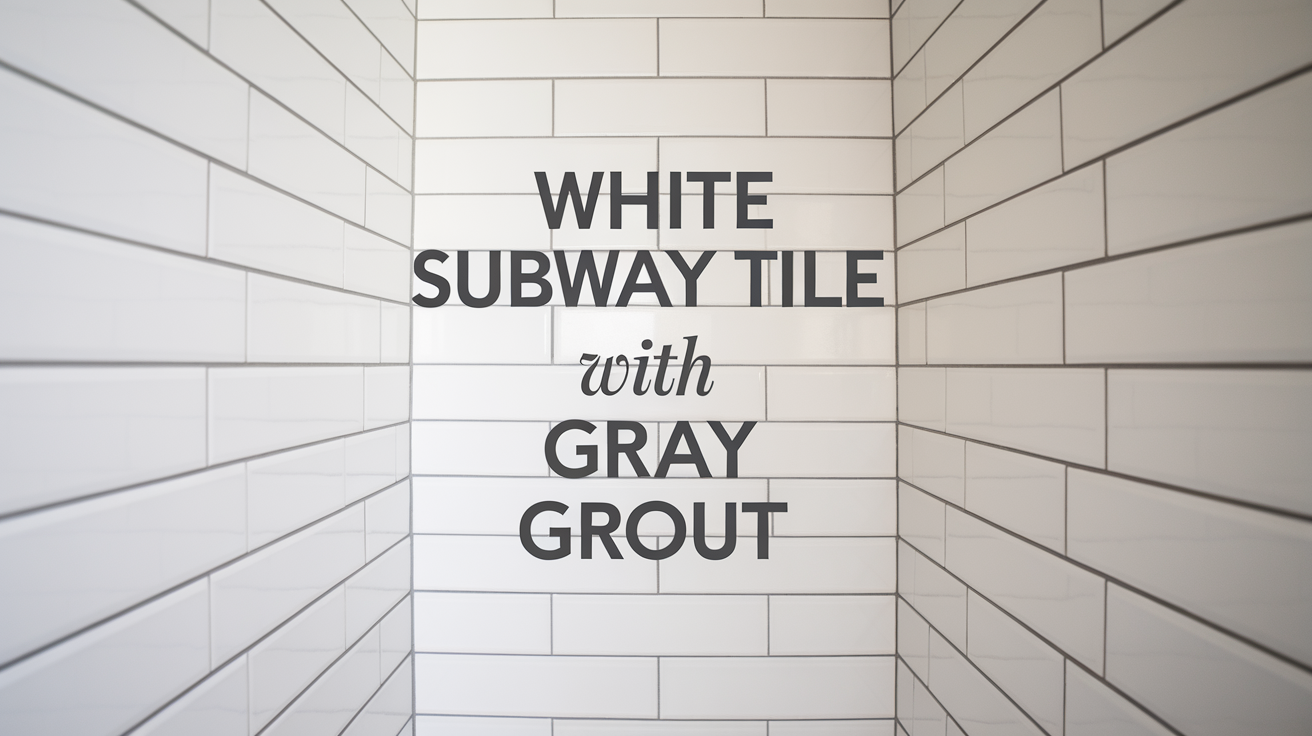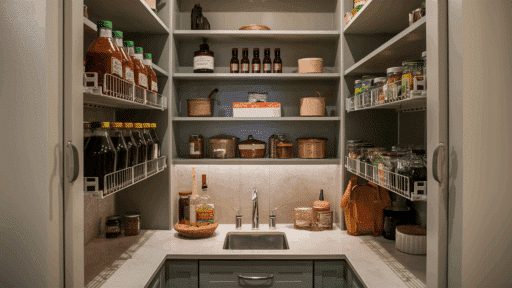Step into a kitchen or bath that feels bright and neat. That magic comes from a simple choice: white subway tile with gray grout.
This look uses classic white rectangles framed by soft gray lines. The gray grout makes each tile stand out and keeps the wall pattern clear.
Gray grout also hides dust and small stains, so you spend less time cleaning. It adds the right contrast for a fresh feel. You can use it in kitchens, bathrooms, or even on an accent wall in a living room. For many home styles, this choice brings a crisp finish.
In this guide, we will walk you through choosing the right shade of gray grout. You will learn how to test sample boards and see how light, medium, and dark tones look when they dry. By the end, you will know which grout shade fits your space and how to install it for a clean, lasting look.
Why Choose Gray Grout with White Subway Tile?
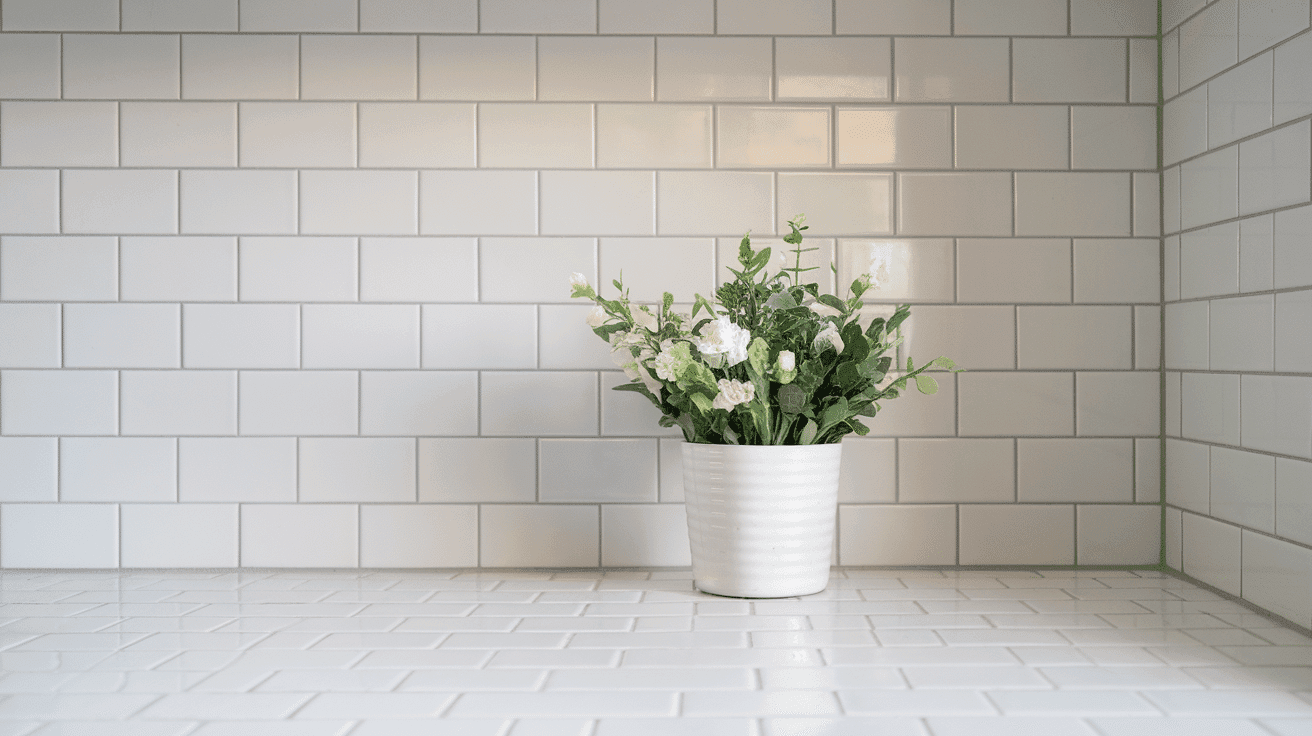
Gray grout is a popular choice when paired with white subway tiles, as it creates a clean and neat appearance. It enhances the tile’s definition while offering practical benefits, making it a smart and stylish choice for many rooms.
- Enhanced Tile Contrast: Gray grout outlines each tile clearly, allowing the shape and layout to stand out. This subtle contrast adds structure without overwhelming the space.
- Easy Upkeep: Gray grout hides stains, dust, and small spills better than white grout, making it easier to keep clean. It reduces the amount of scrubbing required to maintain the look.
- Style Fit: Gray grout complements a wide range of design styles, from classic and farmhouse to modern and industrial. It adapts well to different aesthetics, making it a versatile option for any room.
In short, gray grout adds both function and style to white subway tiles. It keeps your space looking fresh, neat, and easy to maintain.
Shades of Gray Grout: Light, Medium & Dark
Choosing the right shade of gray grout can significantly alter the ambiance of your space. Each shade offers a distinct look and effect, so it’s essential to select the one that best suits your room’s size and style.
- Light Gray: Light gray grout offers a subtle contrast that maintains an open and bright feel in the space. It works well in smaller rooms or areas where you want to maintain a light and airy atmosphere.
- Medium Gray: Medium gray grout offers a balanced look that’s neither too bold nor too subtle, yet still effectively defines the tiles. It’s perfect for most spaces, offering just the right amount of contrast without being overpowering.
- Dark Gray: Dark gray grout creates a strong, graphic line around each tile. It adds a modern edge to your design, making it a great choice for larger spaces or areas that need a bold statement.
Ultimately, the grout shade you select will depend on the ambiance you want to create in your room. Light gray will keep things soft and open, medium gray provides balance, and dark gray adds bold definition. Each option has its place in your home, so choose what suits your style and needs.
Light vs. Dark Gray Grout: Pros & Cons
When choosing between light and dark gray grout, consider the style and ambiance you want to create in your space.
Each choice offers different benefits and drawbacks. Picking the right one depends on your room’s size and the level of contrast you want the grout to show.
| Grout Type | Pros | Cons | Best For |
|---|---|---|---|
| Light Grout | – Creates a soft, bright look – Makes rooms feel larger and open – Blends well with light tiles | – May show stains and dirt faster – Does not strongly define the tile edges | Small spaces like bathrooms and kitchens |
| Dark Grout | – Creates a bold, graphic pattern – Clearly outlines each tile – Adds strong visual contrast | – Can make small spaces feel tighter – Dirt and soap residue can stand out more | Feature walls and larger open areas |
In the end, choosing light or dark grout depends on the feeling you want to create. Light grout helps rooms feel open and airy, but it may require more regular cleaning.
Dark grout makes a strong visual impact and defines the layout, but can make smaller spaces feel even smaller. Consider your room’s size, lighting, and design objectives before making a decision.
How to Select the Perfect Grout Shade?
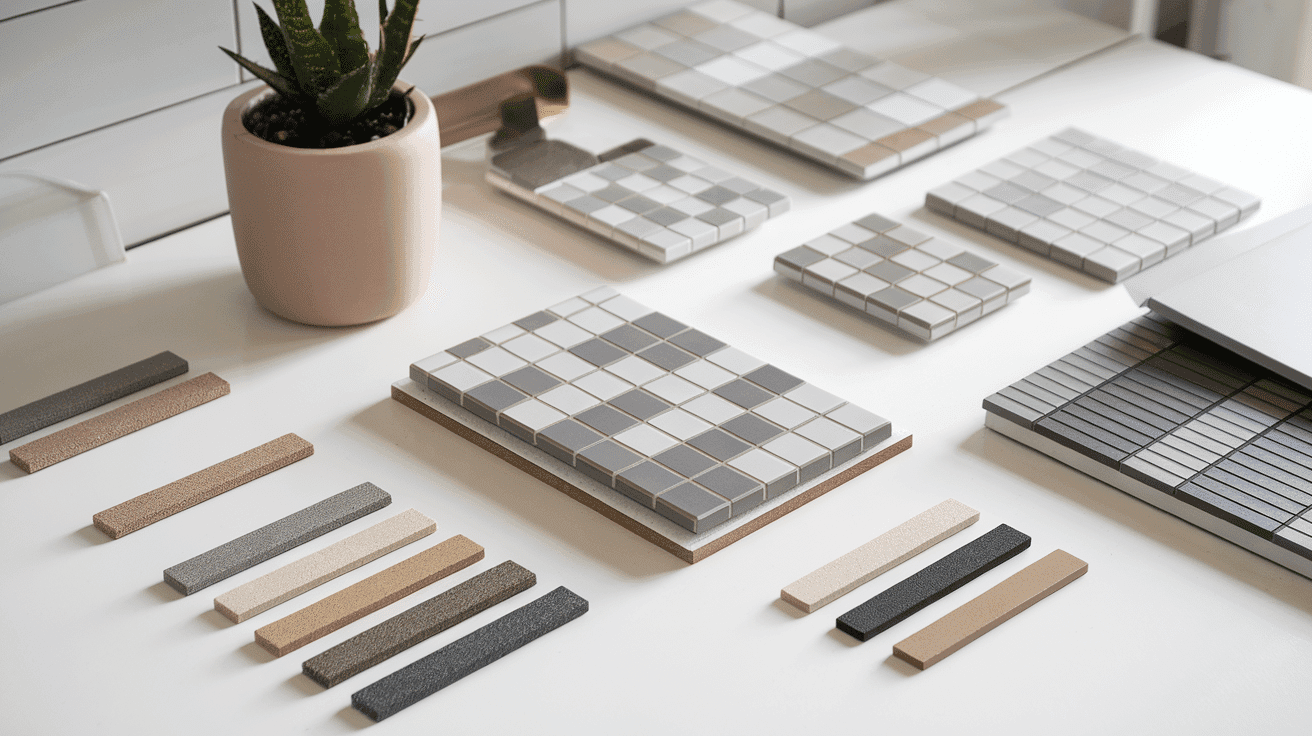
Selecting the right grout shade can significantly impact the appearance of your tile design. The grout can either blend in with the tiles or stand out, depending on the desired effect. Matching the grout with the tile creates a uniform, smooth look.
Contrasting grout, however, makes the tile pattern more defined. It can help highlight the shape of each tile and bring more focus to the layout. Darker grout is a suitable option for achieving this effect, especially in larger spaces or with bold designs.
Another important factor is lighting. Natural and artificial light can alter the appearance of grout. It’s best to test grout samples in your space under various lighting conditions to ensure the final result aligns with your vision.
How to Test Grout Colors?
Testing grout colors is essential before making a final decision. This simple step can help you avoid surprises and ensure that you’re happy with your grout once it’s applied.
- Sample Boards: Create small mock-ups with different grout shades to see how each one looks with your tiles. This gives you a good idea of the finished look without committing fully.
- Drying Time: Grout dries lighter or darker than it appears when wet, so ensure it dries completely before making a decision. The true color will appear once it’s fully set.
- Real-Room View: Always test grout samples in the actual room where it will be applied. Lighting, wall colors, and the time of day all affect how grout will look in your space.
Testing grout colors can save you time and frustration. By using sample boards, allowing time for drying, and viewing them in your space, you can make a confident choice for your home.
Best Uses for White Subway Tile with Gray Grout
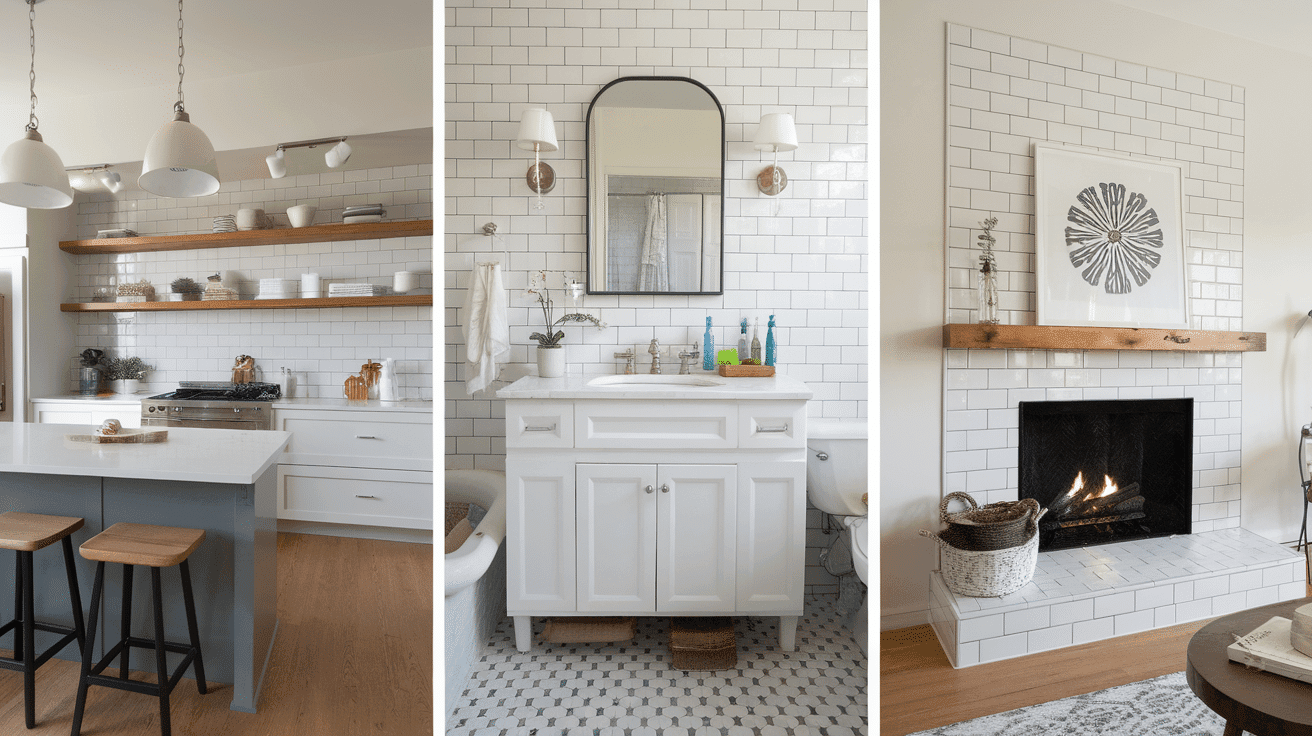
White subway tiles with gray grout are a timeless combination that works well in many areas of the home. They bring clarity, definition, and easy care wherever they are used.
- Kitchen Backsplashes: Gray grout in a kitchen offers easy care and a subtle style that complements other design elements.
- Bathroom Walls & Floors: Gray grout adds gentle definition to bathroom spaces, offering a clean look that feels fresh and neat.
- Accent Walls & Fireplaces: In larger spaces, gray grout helps add depth and structure to subway tiles without overwhelming the room.
This grout and tile combination works everywhere—from kitchens to living rooms. Its adaptability, style, and low maintenance make it a great choice for many areas of the home.
Tile Layouts Enhanced by Gray Grout
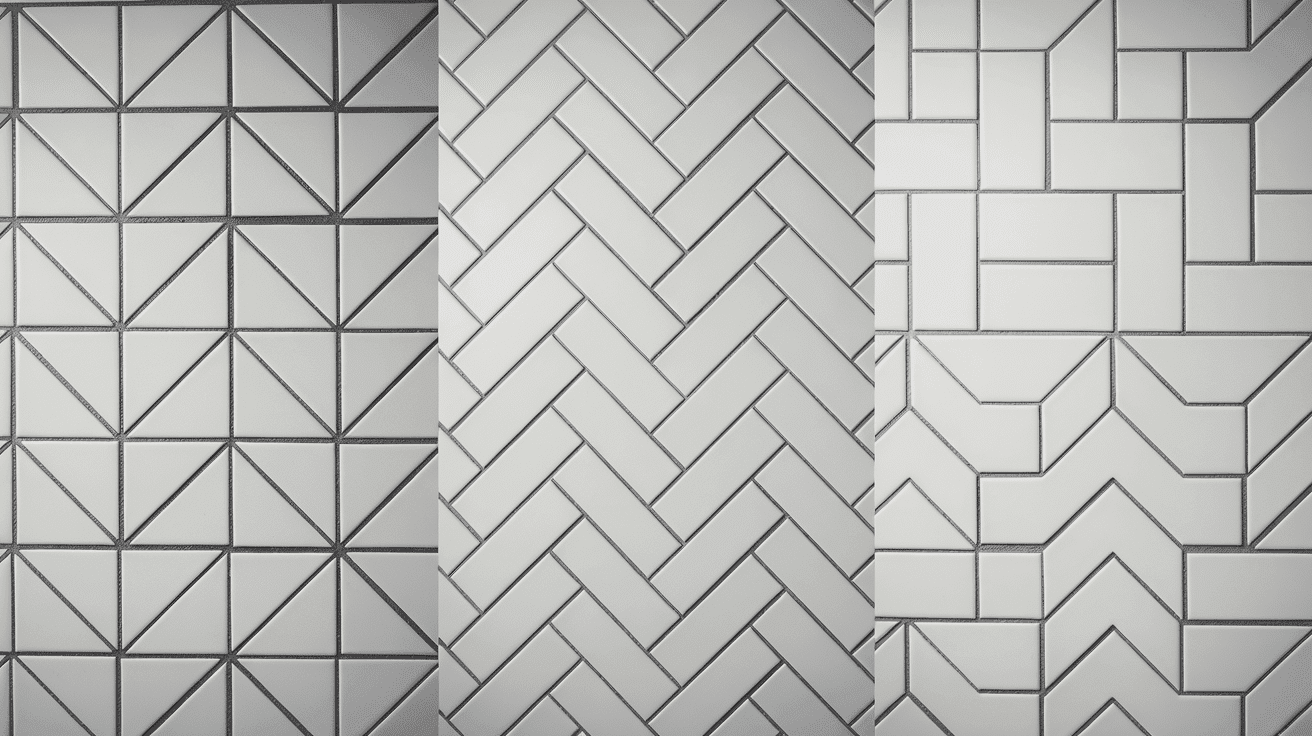
Gray grout enhances the appearance of various tile layouts, bringing out the details of the pattern. In classic and vertical stack layouts, it defines each tile, creating clean lines and a simple look that works well in both small and large rooms.
For layouts like herringbone and chevron, gray grout adds depth and highlights the angles, guiding the eye along the pattern. This makes the design feel dynamic and adds visual interest to the space.
Grid layouts also benefit from gray grout. The grout outlines the edges of each square or rectangle tile, making the design feel sharp and neat. This simple, geometric style works in many settings, adding a balanced and polished look.
Trending Variations
Gray grout is not just for traditional layouts; it also complements trendy tile designs. When paired with textured tiles, gray grout accentuates the surface details, adding depth and a tactile feel to the tiles.
Another popular trend is mixing different tile shapes. Subway, hexagon, picket, or mosaic tiles paired with gray grout help unify the design, creating a cohesive look without feeling cluttered or chaotic.
Two-tone grout is another growing trend. By using two shades of gray, you can create bold contrast or subtle depth. This variation helps add extra style and interest to your design without overwhelming the space.
Common Mistakes to Avoid
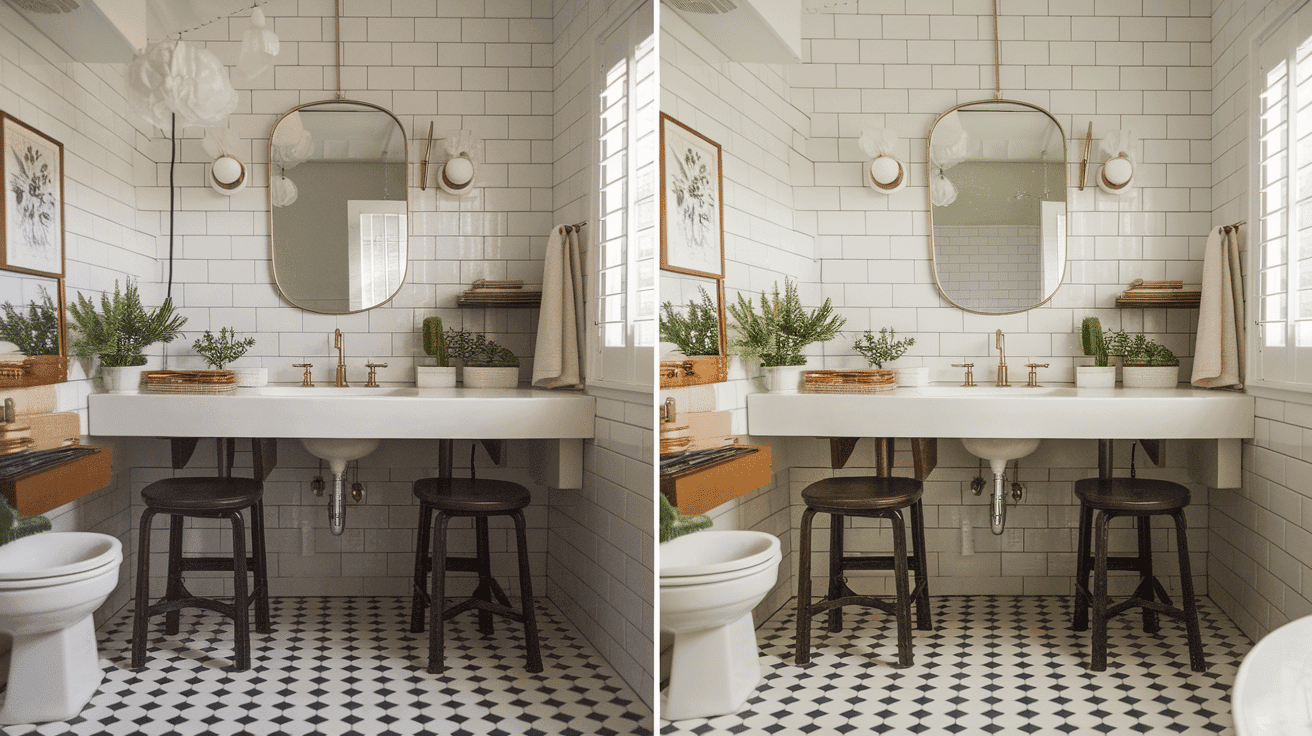
While white subway tiles with gray grout can enhance your space, certain mistakes can affect the final look and maintenance. Here are some key considerations to keep in mind for a successful project.
- Too Dark Grout: Dark grout can make small rooms appear smaller. It can also create too much contrast, making the space feel heavy.
- Skipping Sealer: Failing to seal your grout can result in permanent stains and discoloration. Sealing helps protect it from moisture, dirt, and daily wear.
- No Testing: Failing to test grout samples can result in choosing the wrong shade. Grout often looks different when dry, and lighting can affect how it appears.
By avoiding these common mistakes, you can achieve the best results with white subway tile and gray grout. Proper preparation and testing will ensure that your space looks great and stays easy to maintain.
Conclusion
Gray grout brings a fresh look to white subway tile by framing each tile and adding clear lines. It hides small stains and dust, so you spend less time cleaning.
This simple change gives any room a neat feel without adding extra work or cost. You get a bright, clean finish every time.
In this blog, you will learn how to select the perfect gray shade to complement your tile. We covered light, medium, and dark grout and saw how each tone can change a room’s look. You also learned to test sample boards and view them at different times of day to see the true color.
Now it’s your turn to act. Gather tile samples and lay out small boards with different gray grout shades. Let them dry and watch how light in your room shifts the tone. Compare samples and pick the shade that feels right. Start your tiling project with confidence and ease.
If you found this helpful, you might also enjoy our guide on using white tiles with grey grout to create a clean and stylish look at home.

